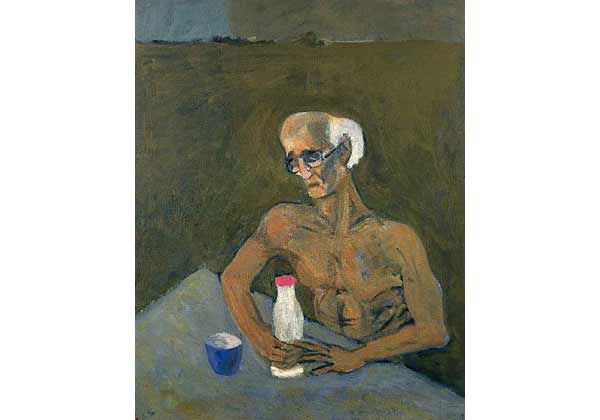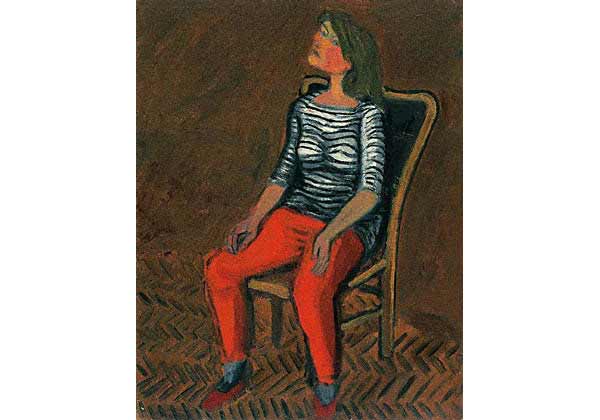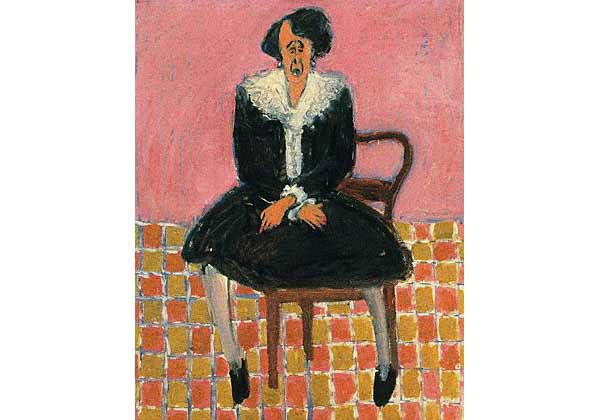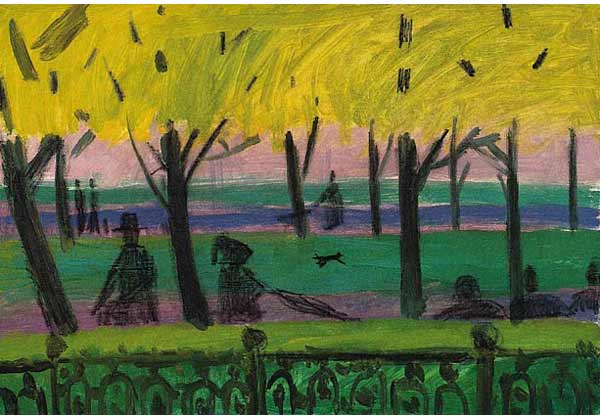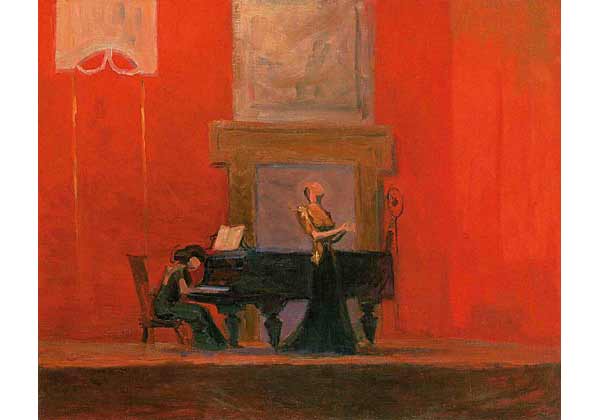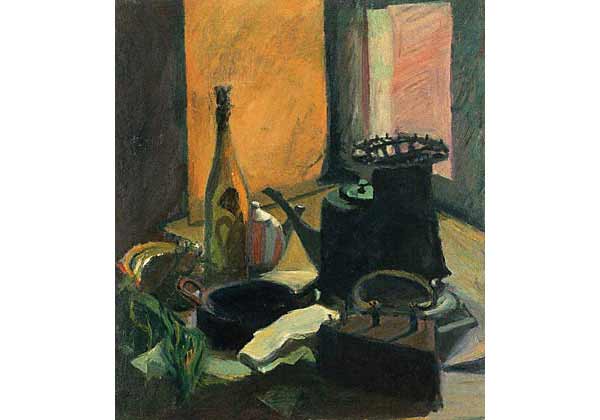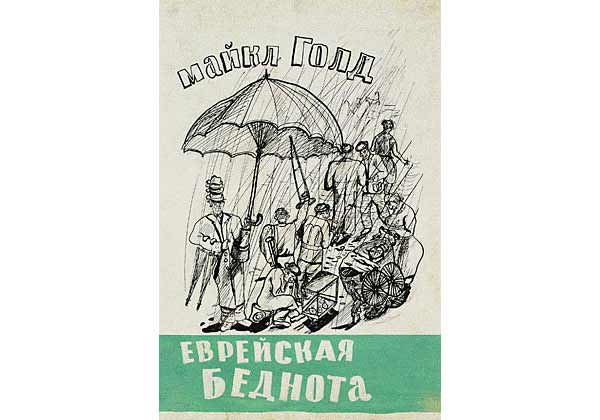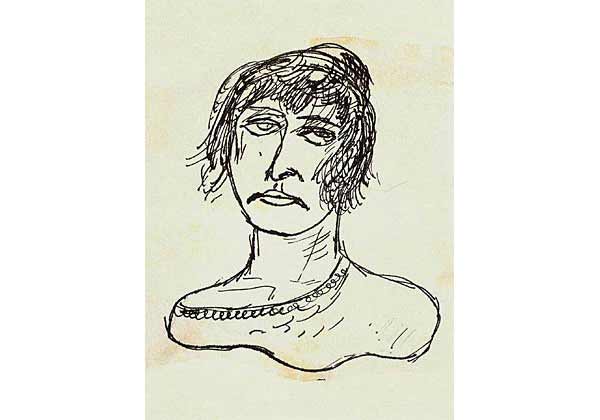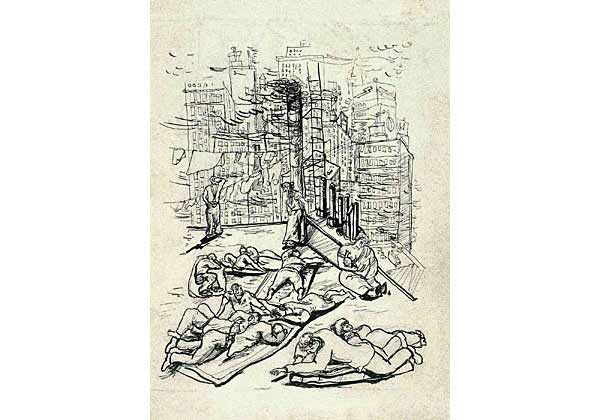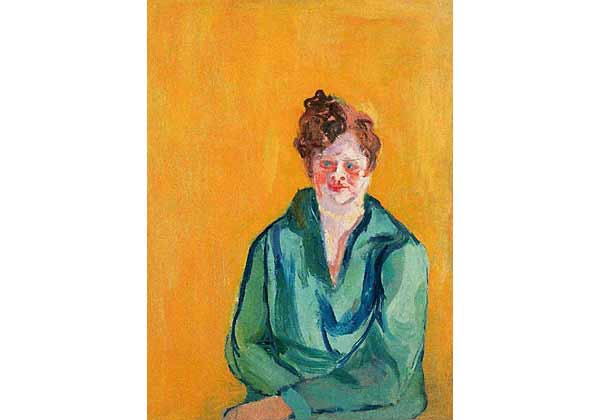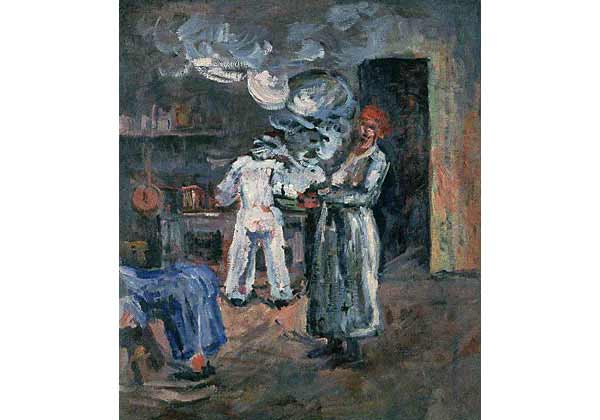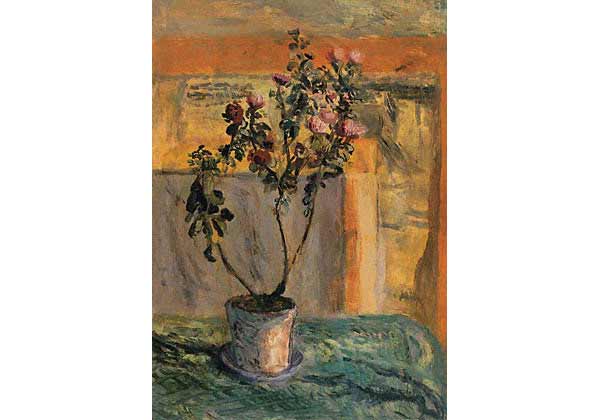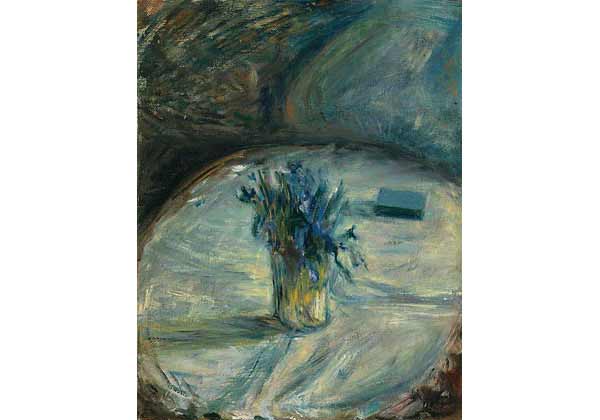Books Leonid Zusman
-
Father
technique:Oil on Cardboard size:92,5 х 73 year: 1960Leonid Zusman. From his diaries. November 20, 1966
And so came my exhibition. The result: for the first time I saw myself in my entirety and turned out not to be as I had mentally envisioned myself. Rather than the serious and even contemplative individual I had thought myself, I saw a jolly individual, smartly dressed, perhaps slightly empty, seeking amusement or the comforts of entertainment in art. Yes, life is a trifling thing.
-
A lady of fashion
technique:Oil on Cardboard size:91 х 71 year: 1960Leonid Zusman. From his diaries. March 14, 1966:
The following paradox is possible: in the place where art is free, too free, in that place, because of an absence of obstacles, art grows weak, dwindles, degenerates; and in the place where it endures fifty years of persecution, abuse and suppression, fully-formed art comes to fruition. Because only that which is genuine, steadfast and harried will manage to somehow preserve itself, to survive. Who passes through the dreadful filter? Only the strong. All that which is weak fails. It is interesting, very interesting, to think how our descendents, “rummaging through the petrified refuse of today,” will find precious ingots, evidence of genuine human art.
-
A lace collar
technique:Oil on Cardboard size:58,5 х 46 year: 1960Leonid Zusman. From his diaries. March 16, 1966:
Life is a trifling thing… In truth, what is the difference whether you lived or not, whether there was life on the planet or was not nor will be. For us, that is, for individuals conscious of themselves, the only significance assigned to life is its inevitable end. This is the most important. The thought of something unavoidable is unbearable for any sort of conscious. This is what is “serious,” and fear in facing it makes all our actions into something significant. In reality, an animal that has no foresight lives life, the entire game, until the final hour. And I, the artist, in particular ought to cherish my ability to play the game: the source of happiness, my senselessness, my frivolity…
-
On the boulevard
technique:Oil on Cardboard size:33,2 х 48,2 year: 1964Leonid Zusman. 1966
I lived for almost forty years in a little home in Zamoskvorechye (district of Moscow). The fairly dilapidated residences of the so-called “Zamoskvorechye Empire” remain there, on the crooked side streets and alleys, to the present day. On the territory directly adjacent to the A. N. Ostrovsky park stood the house where I passed many years. This little corner of old Moscow was visible from its low-placed windows, exactly as it was seen by people in the 19th century. It was strange to watch how, in our day, envoys of another world swept along these very same dark side streets, which occasionally retained the names of former homeowners, in enormous, bright-colored buses, trolleys and streamlined limousines that sparkled with metal and lacquer.
-
Winter day
technique:Oil on Canvas size:74,5 х 92,5 year: 1960Leonid Zusman. 1966
A little more time and the modern, powerful city will swallow up the little island of old Moscow that I have known since childhood. My dilapidated little home is already gone. And as for me, I now live in a tall, pretty, comfortable home. Completely different horizons are visible from my new windows, the boundless panorama of the residential masses.
-
Danae
technique:Oil on Canvas size:78 х 146,5 year: mid-1930-sLeonid Zusman. Winter on Vasilyevsky. 1982
The desperate desire crept up again and again to toss aside, cut short and break off everything and return to Moscow regardless of the cost. And the beginning of “great changes” could be felt at the Academy up through that time, which also encouraged departure. Winter had already ended and the miserly Leningrad sun appeared over the city on an ever more frequent basis and ever warmer. On a usual Saturday, as always, I went to the Hermitage. Of course, to Rembrandt. When the sun’s rays fall on Danaë and merge with the Rembrandt-esque golden rain, a miraculous thing takes place. People silently watched this amazing sight, which was like a celestial natural phenomenon, an eclipse of the Moon and Sun, a phenomenon that always gives rise to a some sort of a feeling of awe in its audience.
*
Danaë is a portrait of Vera, the artist’s wife. The author depicts himself in the right corner of the painting. The work is set in a room of the house on Bolshaya Polyanka (Street) in Zamoskvorechye (district of Moscow), where the artist lived a large part of his life.
-
Still life with a small stove
technique:Oil on Canvas size:67 х 59 year: late 1920-sLeonid Zusman. Winter on Vasilyevsky. 1982
…It seemed that a subject, a model, be it a person or a group of objects, is both highest criterion and highest goal. The essence of the whole affair is to express oneself, no, no, not exactly oneself but one’s attitude towards that which is observed, with the greatest possible precision and clarity… And how is this to be done? This is where the headaches began: the history of art offered up a multitude of every imaginable sort of means, systems, approaches, manners and, finally, laws and canons. And it set them one against the other with a pitiless subject that seemed so close and was ever so elusive. It sometimes happens in dreams that you are trying to get somewhere, but it, that is, the thing you are striving towards, silently moves away from you, as if dissipating. It’s much simpler to create this subject, to become its maker, its master, and then all doubt falls away “of its own accord.” This is how things progressed…
-
Illustrations to Michael Gold's book
technique:India ink, tempera on paper size:25,1 х 17,2 year: 1930-1931Leonid Zusman. 1978
The book illustrator’s work is peculiar. To a certain extent it reminds one of the work of an actor who, in playing various roles, each time manifest in a new form, is suited for the play. The book illustrator also does this, striving to better express the spirit of the literary work, to penetrate the intent of its author, to be true to the era; because of this his individuality merges to a degree with the temper of the work. At the same time, when he is on his own alone with nature, when he is totally unadulterated, an easel painter should always remain himself. This is the root difference in their work, and because I work in such varied fields I am faced with somehow uniting these conflicting origins within myself.
-
A Red-haired beauty
technique:Oil on Canvas size:99,5 х 72,5 year: late 1920-s - early 1930-sLeonid Zusman. At War. A Civilian’s Memoir. 1981
It is evident how adjusted man already is: the moment he is released from the fear of death he is once again seized by every possible little passion and desire, and that system of human relations again comes into its own; this is the system of sympathies and antipathies, loves and hatreds, striving to achieve every sort of goal, in a word, all that which is called and from which is formed the fabric of our everyday life.
And we forget the moments of terror we lived through, forget the inevitable, supposing that things will continue this way eternally, and we need to act, to achieve, to strengthen, to push, to press on… And what of happiness? All of life, but particularly in youth, I suffered from unsatisfied passions, from ill-fated love affairs, since the girls I loved didn’t love me and the girls who loved me weren’t loved by me. It’s not worth discussing this. I suffered from consciousness of the impotence of my talent, from my lack of a visual memory, which is as necessary for an artist as perfect pitch is for a musician. I suffered from professional ineptitude, from never-ending doubt of my abilities, from dissatisfaction with my appearance. I suffered from doubt in my choice of a profession, of a path. There were periods when I tossed painting aside for several years and thought myself an actor at times, a poet at others. Something was always lacking. I never experienced the calm, joyful state that is obviously called happiness. And then I posed a question to myself: when had I been happy, even just slightly, just for a little while. Perhaps when, for the first time, sitting in a darkened movie theater, I touched the hand of the red-haired girl who, in the end, married someone other than me. Or when I first read Villon and Baudelaire’s poetry and was filled with admiration for them. Or when I first managed to write a short little poem…
-
A blue dress
technique:Oil on Canvas size:147 х 69,5 year: 1920-sLeonid Zusman. From his diaries. October 10, 1965
I see a face, of course a female one. I take note of everything: skin color, composition, hair type, and various odds and ends, all these and similar elements that make up a likeness. Sometimes it is the amazing combination of the colors of facial skin, hair and lips. Sometimes the shape of the eyes, some sort particular glance. In a word, all it takes is the slightest cue and work begins. All attention concentrates on this, finding all the new components, but the archetypal stroke slumbers somewhere, buried under the heap of new details…
The most difficult process is the concretization of this visage, which needs to be expressed in the language of art: traditions, schools and the accepted system of relative artistic symbols. And how often they are victorious. And how much effort must be spent keeping interest alive, purifying and preserving the granule all that fuss raged over. But many, many artists take up the brush from a desire to illustrate this or that idea, most likely an abstract idea… and there’s no art in that.
-
In the kitchen
technique:Oil on Canvas size:71,5 х 62,5 year: late 1920-s - early 1930-sLeonid Zusman. At War. A Civilian’s Memoir. 1981
I though how wonderful peaceful life is, how comfortable it is, because I didn’t notice or value this earlier. Why was there always something that dissatisfied me, grieved me? I dreamed that if only I would return unharmed, then I would be satisfied with everything, everything, everything. I think that there is no greater happiness than to sit at the table in a simple, warm and clean room and sink into the chair. God, what a comfortable contrivance: a chair! And what bliss to lean your elbows on the level, smooth surface of a table! I need nothing more! I recalled my old, dim Moscow apartment with its large Dutch oven that barely warmed our two rooms. The small, low-set windows, near which filed a never-ending procession of passersby’s shadows and the shadows of red trams appeared with a rumble, the noise of which rattled the glass in the windows… And yet how wonderful it was! Could all this really come back? And in the rural calm it once again seemed that everything was possible, that everything would return…
-
A bunch of violets and a box of matches
technique:Oil on Canvas size:42 х 33 year: late 1920-sLeonid Zusman. 1978
The thought that a painting is valuable in and of itself is strange to me. I see its purpose in the images and associations that it calls up and the richer and wider their scope, the more the painting is needed. And the mighty community and continuity of humanity also plays a part in this; it finds expression at the very least in the fact that we, people of the second half of the twentieth century, who fly in enormous airliners, who penetrate the cosmos and have set foot on the moon, and an artist separated from us by three centuries, who wore a powdered wig and silken breeches, who believed in God and revered a king, take the exact same joy from such simple and wonderful sights as a simple dish filled with peaches with their velvety, soft skin saturated with light blue and pink colors, or a white pitcher with dark blue designs and the little bouquet sticking out of it.
